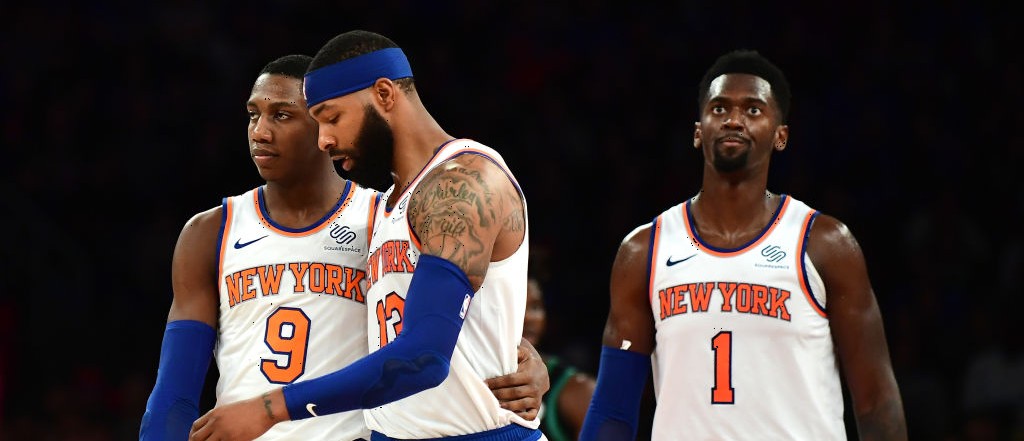NEW YORK — Ahead of their penultimate preseason game, Knicks coach David Fizdale announced the team would shuffle around its starting lineup once again. Against the Hawks, New York would send Dennis Smith Jr., R.J. Barrett, Marcus Morris, Julius Randle, and Bobby Portis out as the starters in an effort to give Smith a turn in the point guard competition and see if the Randle-Portis pairing could create better spacing than when Mitchell Robinson starts at center.
Lineup tinkering in the preseason is the norm in the NBA, but in New York, it was just the beginning of what will be a season-long experiment with lineups and rotations. The roster construction of this team, with congestion at power forward and confusion at point guard, makes one particular statement Fizdale made at his pregame presser something of a thesis statement for the Knicks this year.
“I want to look at different pieces and how they fit,” Fizdale said.
For now, the Knicks seem to have a general starting lineup figured out. Elfrid Payton has started every game except the opener at point guard, keeping a tenuous hold on that spot, although a hamstring injury forced him to exit Monday’s win over the Bulls. Barrett, Morris, and Randle have started all four games, while Robinson has been in the starting lineup for each game he’s been available. Beyond the five that start the game, however, the rotation will be a constant work in progress to see what works.
“You do have to [have an open mind], especially when you have a lot of guys who are capable of playing,” Fizdale said. “So I have to keep that open mind, because it wouldn’t be fair for me to just have favorites or anything like that. I have to figure out which guys fit best together and who’s going to play well together.”
The hope is that they found something that clicked late on Monday night against Chicago, as they rattled off a 15-0 run to close the game and pick up a rather stunning 105-98 win over the Bulls for their first win of the season. As most players will tell you, who closes the game is more important than who starts it, and with Payton out, Fizdale got creative with some offense-defense subs when possible with Wayne Ellington (their best shooter) and Frank Ntilikina (who had zero points in 22 minutes but is their best perimeter defender), as well as Robinson for Portis.
That substitution pattern paid off. Portis hit some key threes in the fourth quarter and the defense managed to hold the Bulls scoreless for the final 3:33 of the game. And yet, even that success illustrates the incredible balancing act required to get positive results out of this roster. The Knicks’ best defensive lineups are absolutely miserable offensively and vice versa, making it difficult to put the puzzle together. Trying to get the right group on the floor in key moments is going to be the greatest task facing Fizdale this season, who readily admits that combination will likely change on a nightly basis.
David Fizdale on who the Knicks closer could be down the stretch of games:
"I think for us it might be a different guy every night" pic.twitter.com/q3QW0A8ftw
— Knicks Videos (@sny_knicks) October 26, 2019
Aside from the difficulty of not having a consistent rotation he can rely on each game, it’s going to be an uphill battle for Fizdale to keep guys engaged and happy in roles that are ever-shifting. The main job, however, is to lift up those who can be part of the core moving forward.
The good news in that regard is that the precocious Barrett, New York’s prized first-round pick from the 2019 NBA Draft, has shown incredible promise to start the season and has exceeded some expectations placed on him following an inconsistent year at Duke. Randle is the other cornerstone on this roster, but beyond those two, Fizdale will be trying to ride the hot hand, like when Portis scored 28 points on 10-for-14 shooting against his old squad on Monday.
This Knicks season probably won’t be especially pretty and likely won’t feature all that many wins, but it will be fascinating to follow along, if only to check out how the roster gets managed around the handful players we can safely assume are in the team’s long-term plans.







